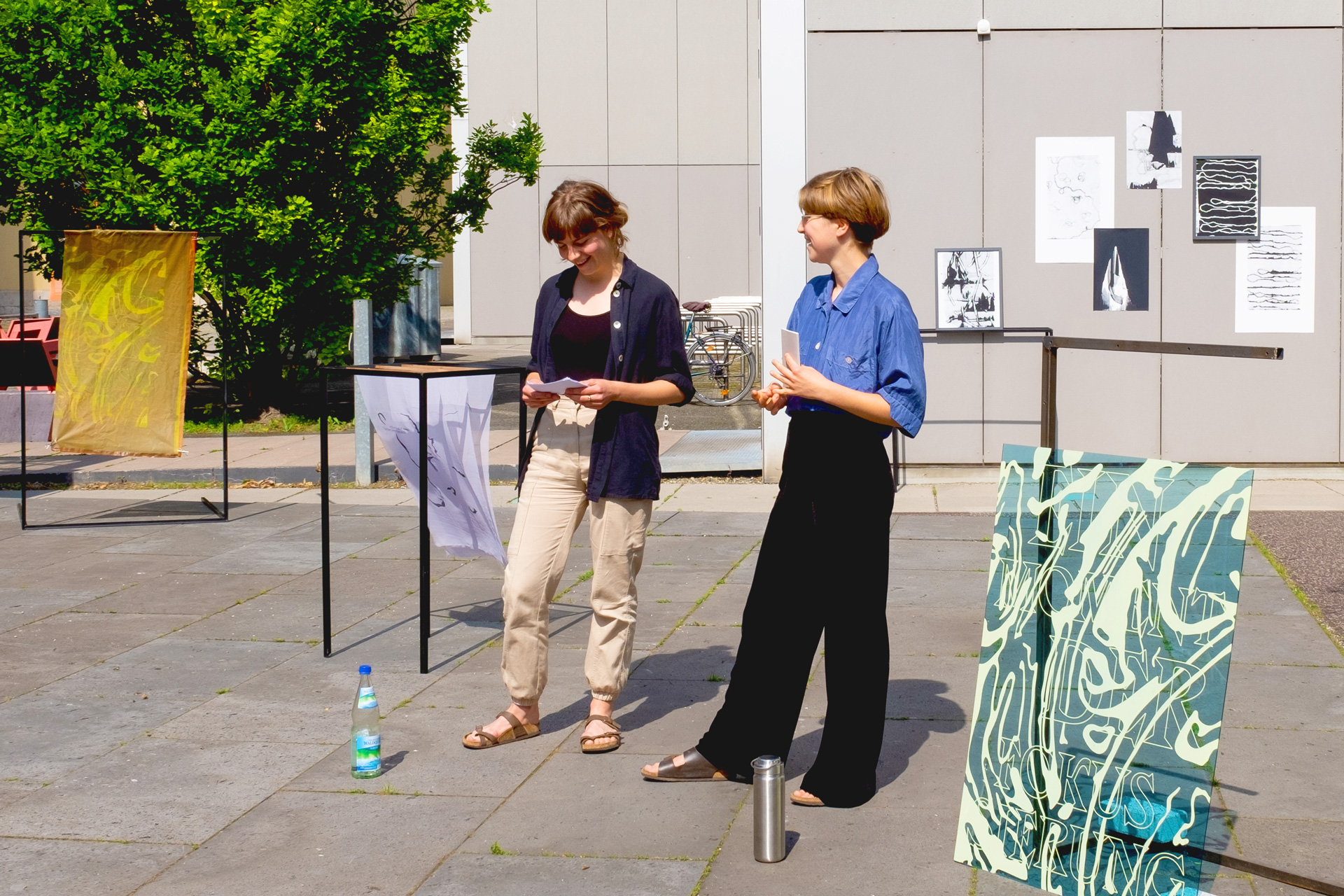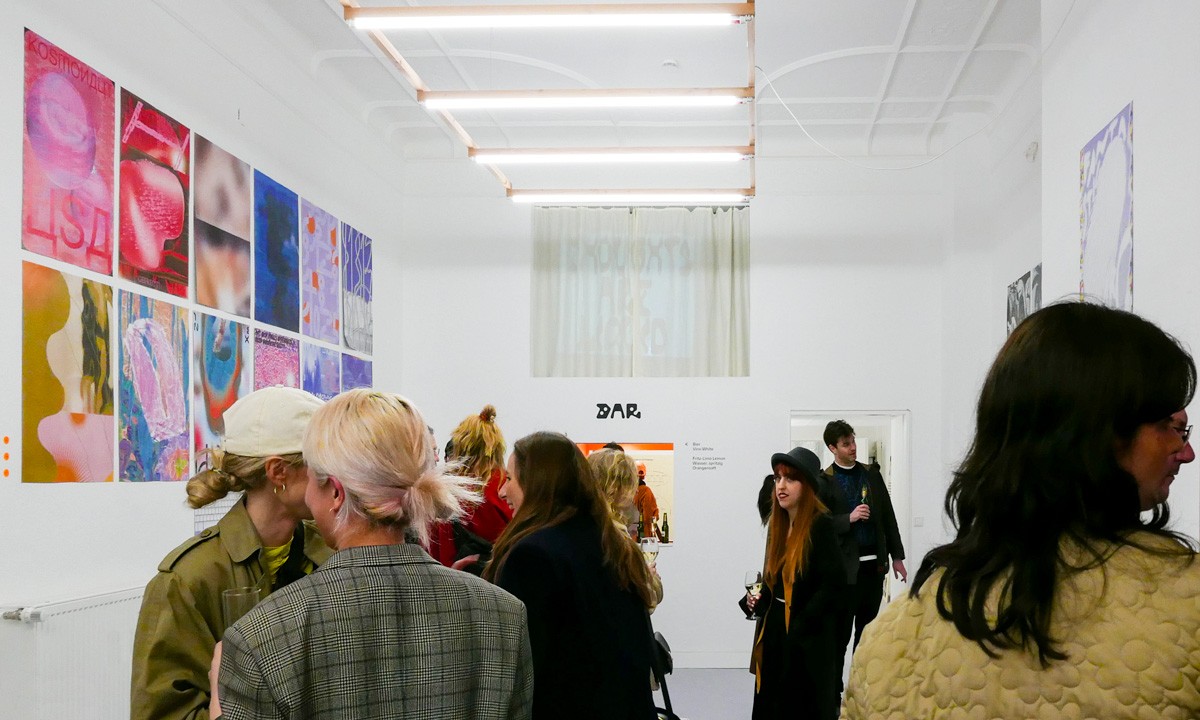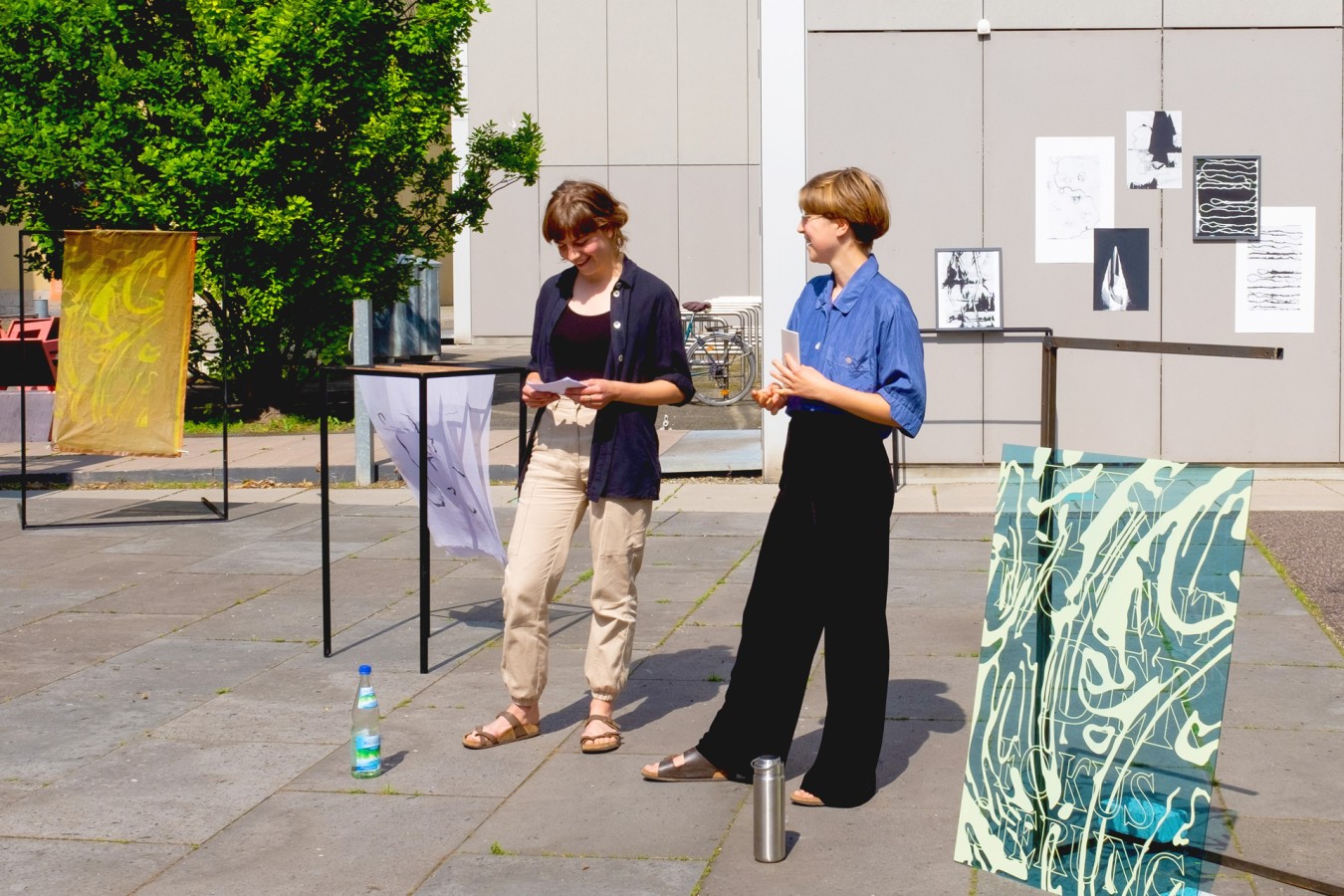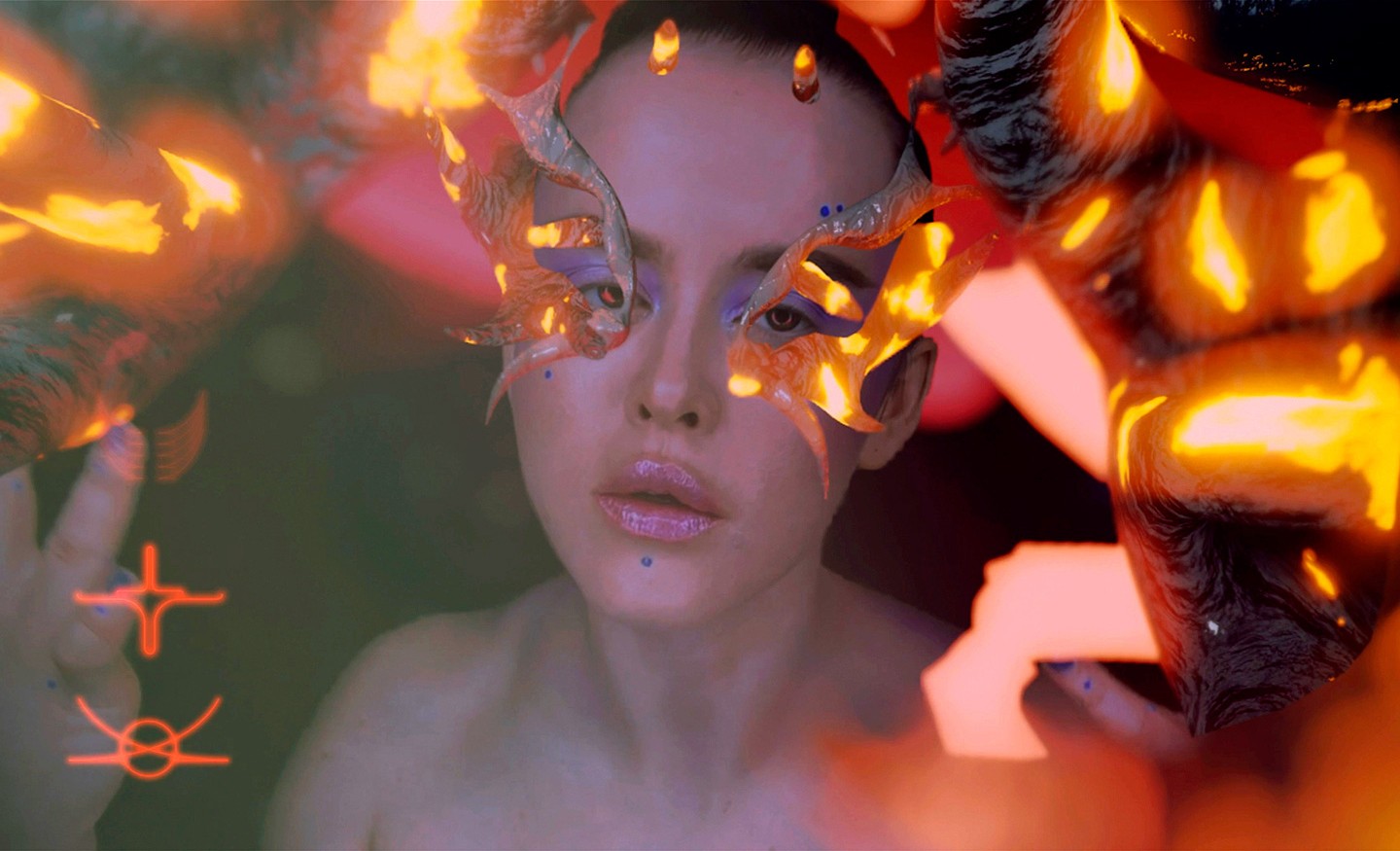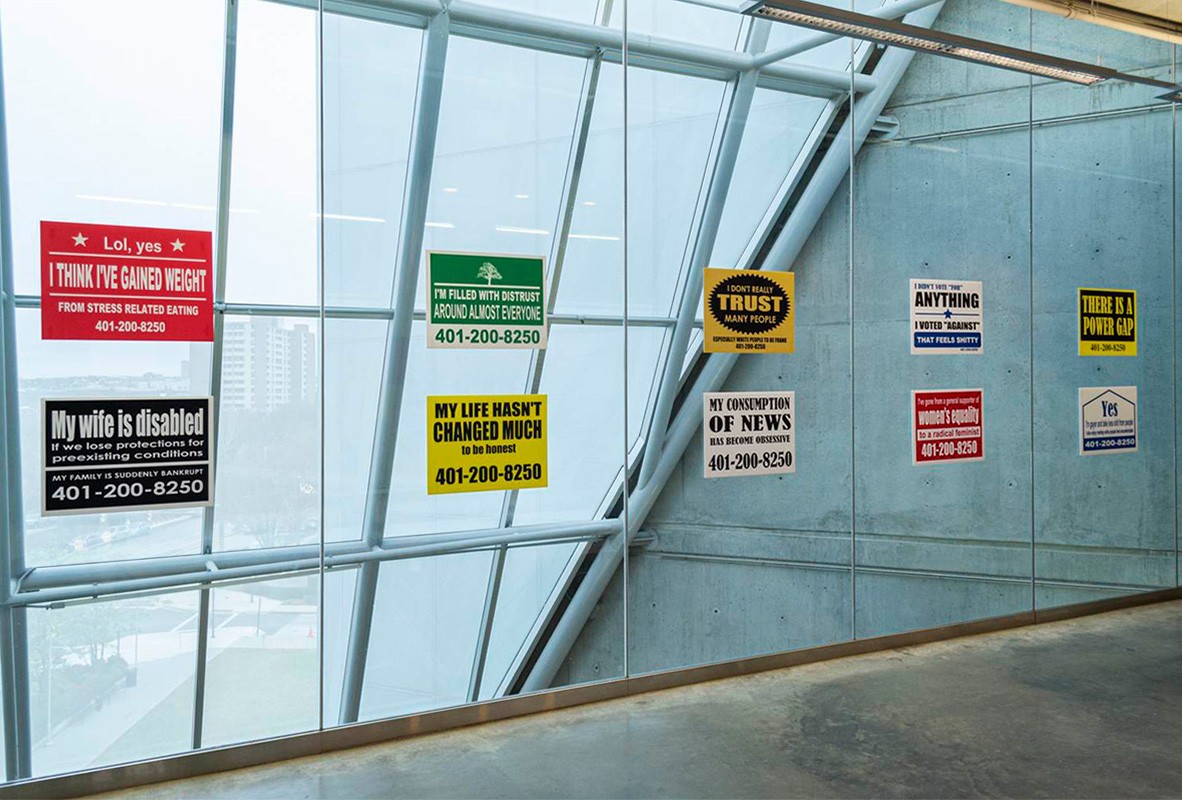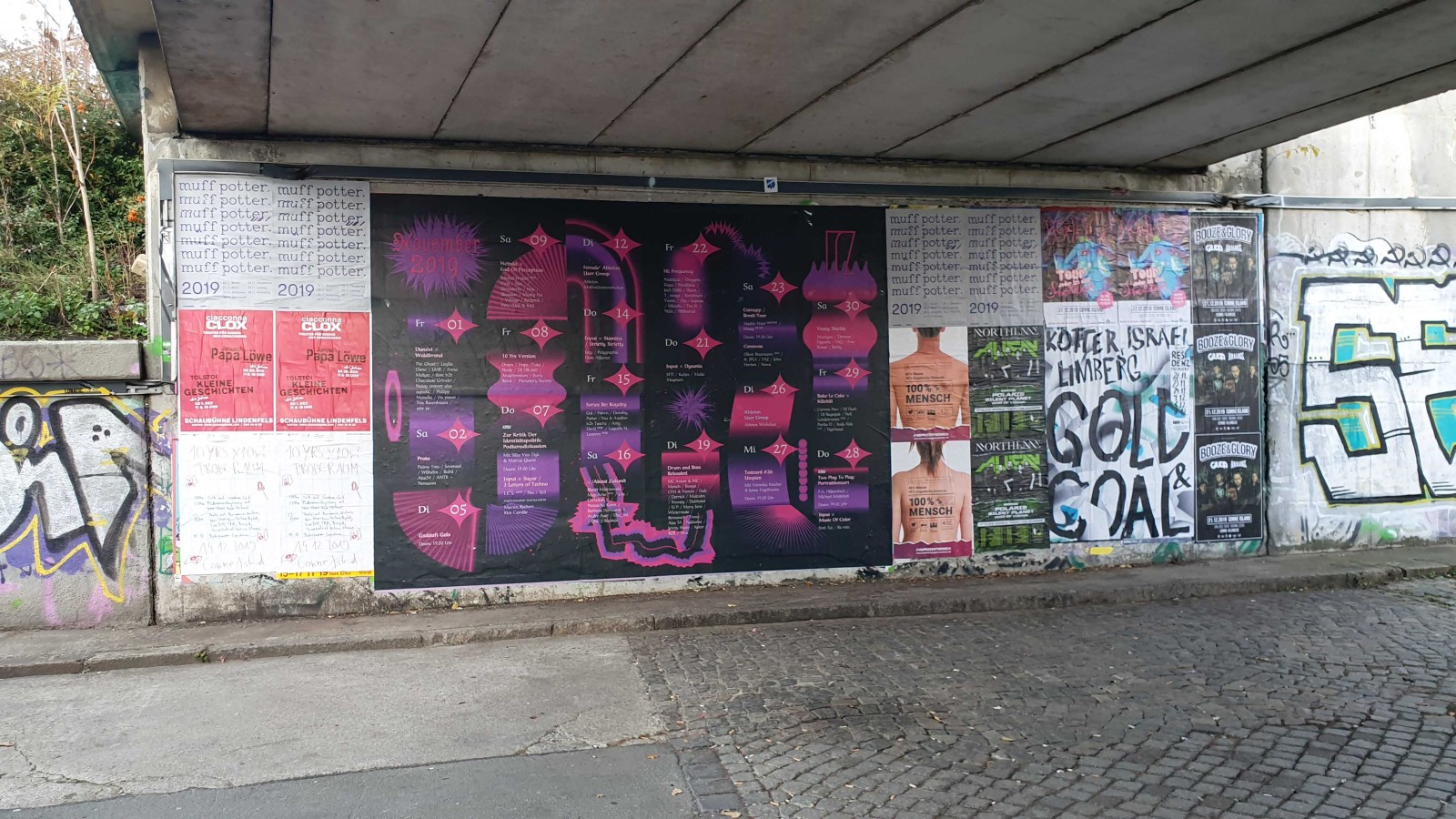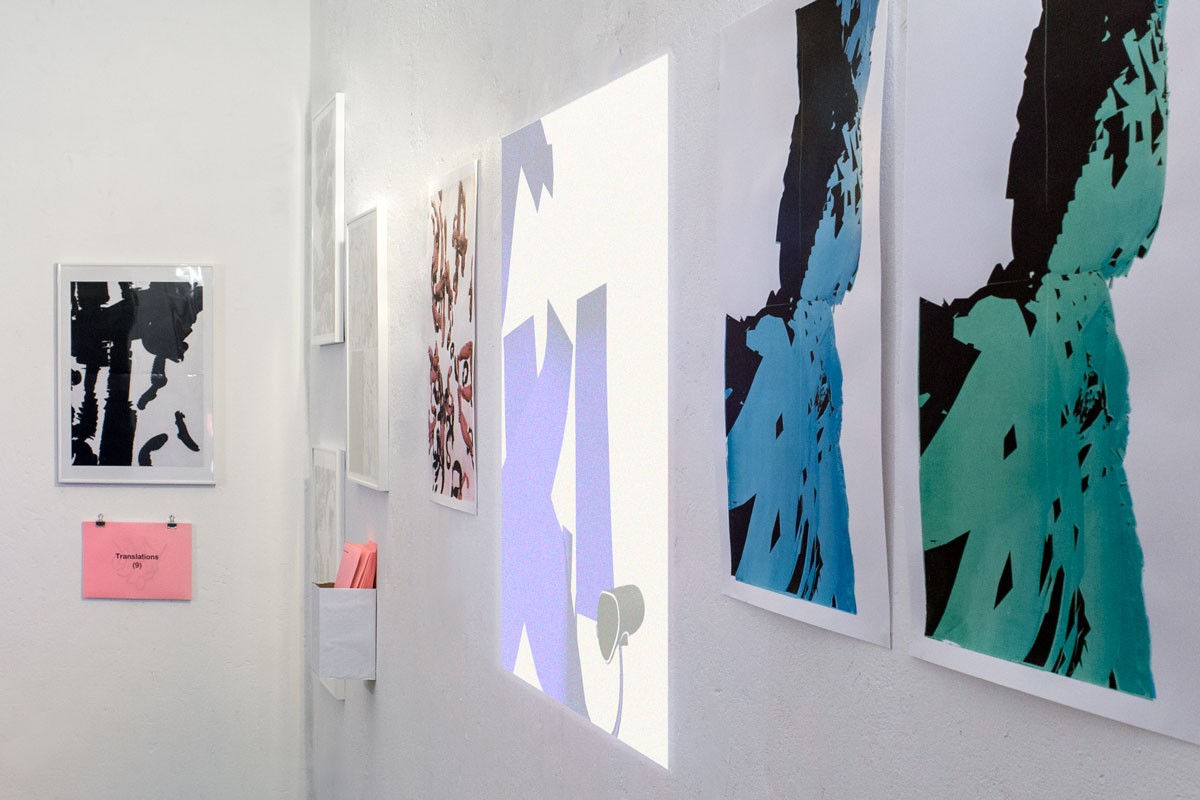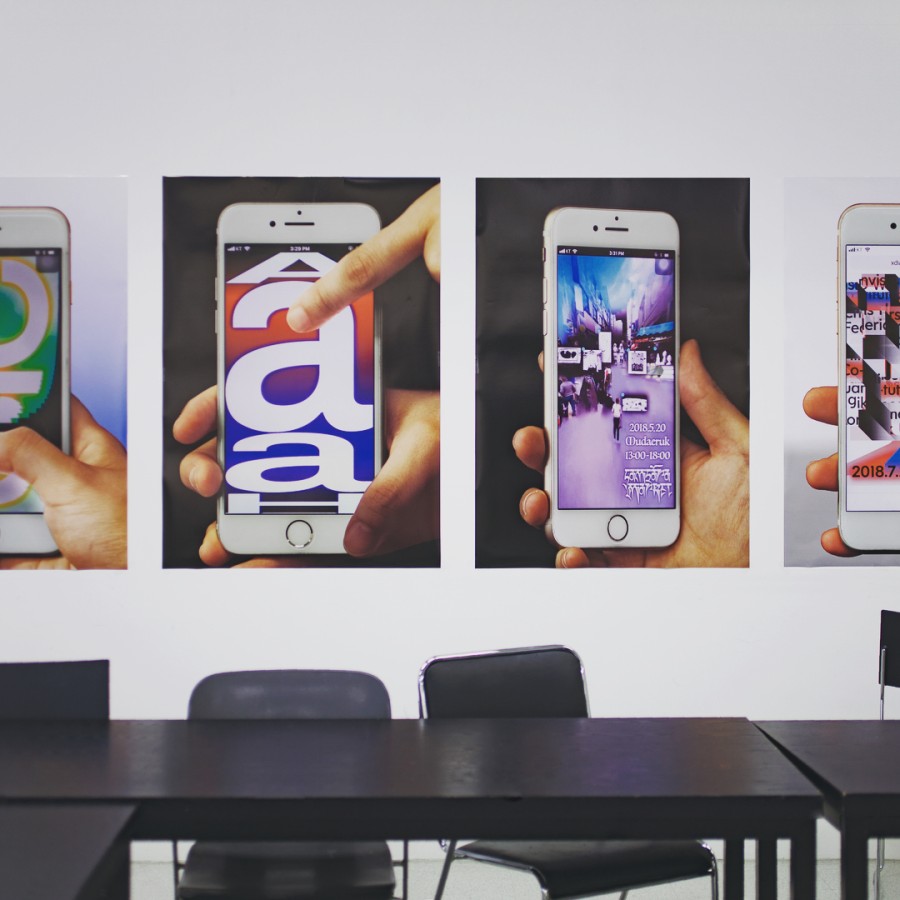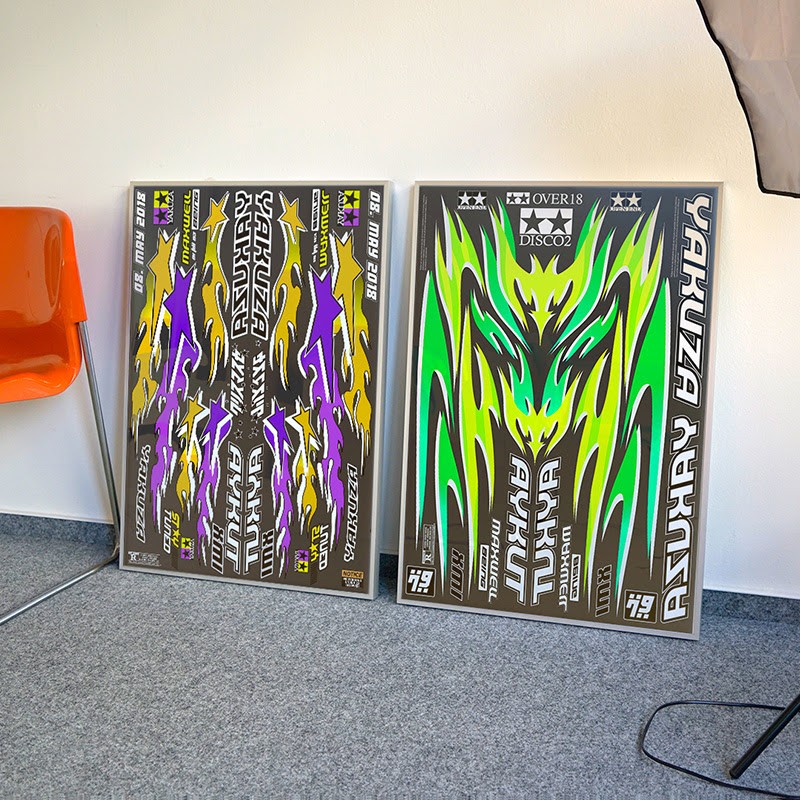Lina and Nora, which do you prefer, the analogue or the digital process?
[NK] The term of post digitalism explains my sentiment quite well. It means that I am not rejecting digital techniques, but that I think critically about how we work with them. It’s a matter of personal preference. The combination of the two is what works best for me. There are many ways of experimenting with digital tools, and it’s not something I reject.
[LG] It is a question of what fits one’s individual needs. What way of producing feels closest to me? What outcome do I want to see? What should it look like?

Why did you choose to work with an analogue technique for creating these posters?
[NK] We wanted this to be a process in which we allowed ourselves to be slow—our way of rejecting the daily fast-flowing stream of images and information that our generation feels forced to keep up with. Manual screenprinting is very time intensive, so it felt like the obvious choice. It enabled us to use the process, manipulate it and experiment with it. Ultimately, we wanted to learn about screenprinting—and we did. That is a great outcome on its own.
[LG] We wanted to let the posters themselves show that there is a process behind them. A digital poster is not really changing or ageing. It’s perfect, no matter how many years you will store it. It will not reveal the process behind the work.
[NK] It adds value, too. Posters are often ephemeral. We wanted to make posters that are images for themselves, even objects. Maybe it makes you want to touch it or smell it. We tried to appeal to more that just the visual sense. The intention was not to do something didactic, but rather to give clues what is beyond what meets the eye.
In your project abstract, you mentioned the term of productivity, stating that manual work makes you feel you are doing something productive. Can you define what you mean by productivity?
[LG] For us, it means that you use your authentic self, your interests, and powers to translate your visions into something other people can see, feel, or grasp. And that something is not just work or physical output, but rather a way of thinking: How could I utilize my ideas and strengths? It can be sitting and doing nothing, but it can also be drawing, without asking yourself for what, why, or for which output. I do it, because I feel fine while doing it!

Your output ranges from paper prints to glass posters and textile prints. What’s behind the diverse materiality?
[LG] We knew from the very beginning that we wanted to use a range of different materials, because the theoretical investigation as part of our thesis was about materiality: How can I establish a relationship to the way I am working? Our answer was: By using our hands and appealing to multiple senses. We also wanted to show how diverse the medium poster can be. Next to a digital poster, what forms can a physical poster take on? Screenprinting was the perfect technique to further follow these trains of thought, because you can print on almost any material imaginable.
What did your process look like?
[NK] For some objects, we worked with quotes that we extracted from our theoretical text, which was the starting point of this project. Of course, we did work with digital tools to support our analogue process. For instance, we projected text on a moving textile to create a motive and then worked on it digitally. Another approach was following the coincidences that happened while printing to create new images out of them.
[LG] We utilized the side products of printing, like making collages with fragments of films we found in the workshop and developing them on the screen. In the beginning, we tried almost everything we thought that might be fun—different kinds of template techniques, drawing directly through the screen, mixing our own pigments. Many times the outcome of our experiments was not what we expected. No matter what happened, all of our trials, failures and learnings, we collected in a notebook. We also made a poster collecting all these experiments. In the end it had 30 layers.
The greatest limitation and greatest advantage is that the output is irreversible. When you print, when you draw, when you work with actual material, you can never go back. You always have to work with the consequences of your decisions and the coincidences that happen. I feel like, this makes it easier to tell when something is finished.
A lengthy process like this requires good collaboration and trust. How did you come to work together on your bachelor project?
[NK] It happened rather naturally. We had been working together for four to five years during our studies. We had always shared the same interests, which is why we often ended up taking the same classes and seminars. Together, we thought about what could be interesting to work on for such a long period of time, and what knowledge we would like to acquire and deepen.
[LG] It wasn’t a question of should we do it together? We just knew that it would be more fun to combine our interests, strengths and powers for this process.

What types of gifts does each of you bring to your collaboration?
[LG] We always balance each other out. If one of us is tired and hates everything we ever did, the other takes up the optimistic, spontaneous and encouraging role.
[NK] I don’t know if you agree, Lina, but I have the feeling that you have an eye for details. I tend to see the bigger picture.
[LG] I would agree! And then, our strong friendship helps us to be very honest when it comes to ideas. I am more bold when I am working with Nora as opposed to when I am working alone ·


